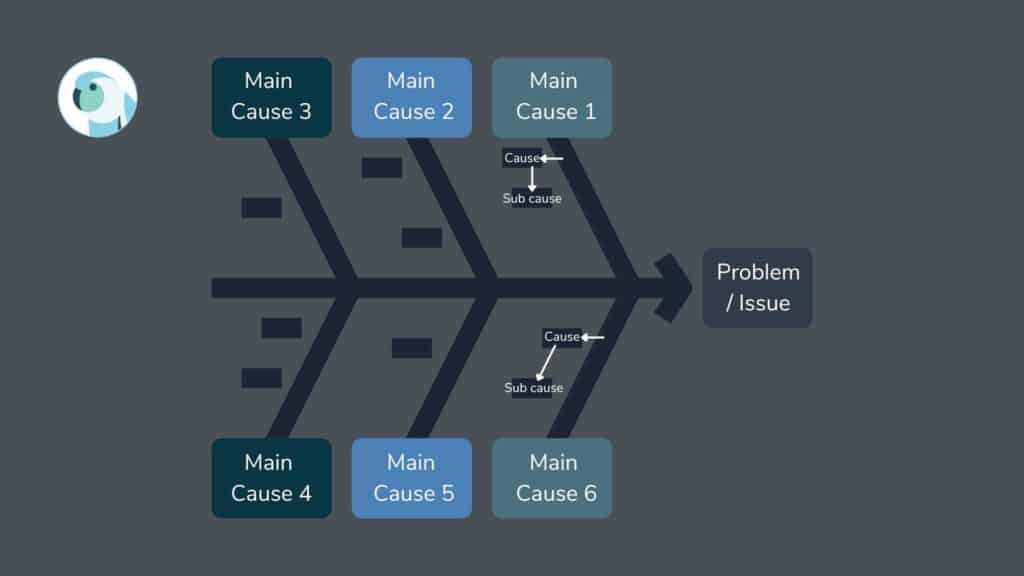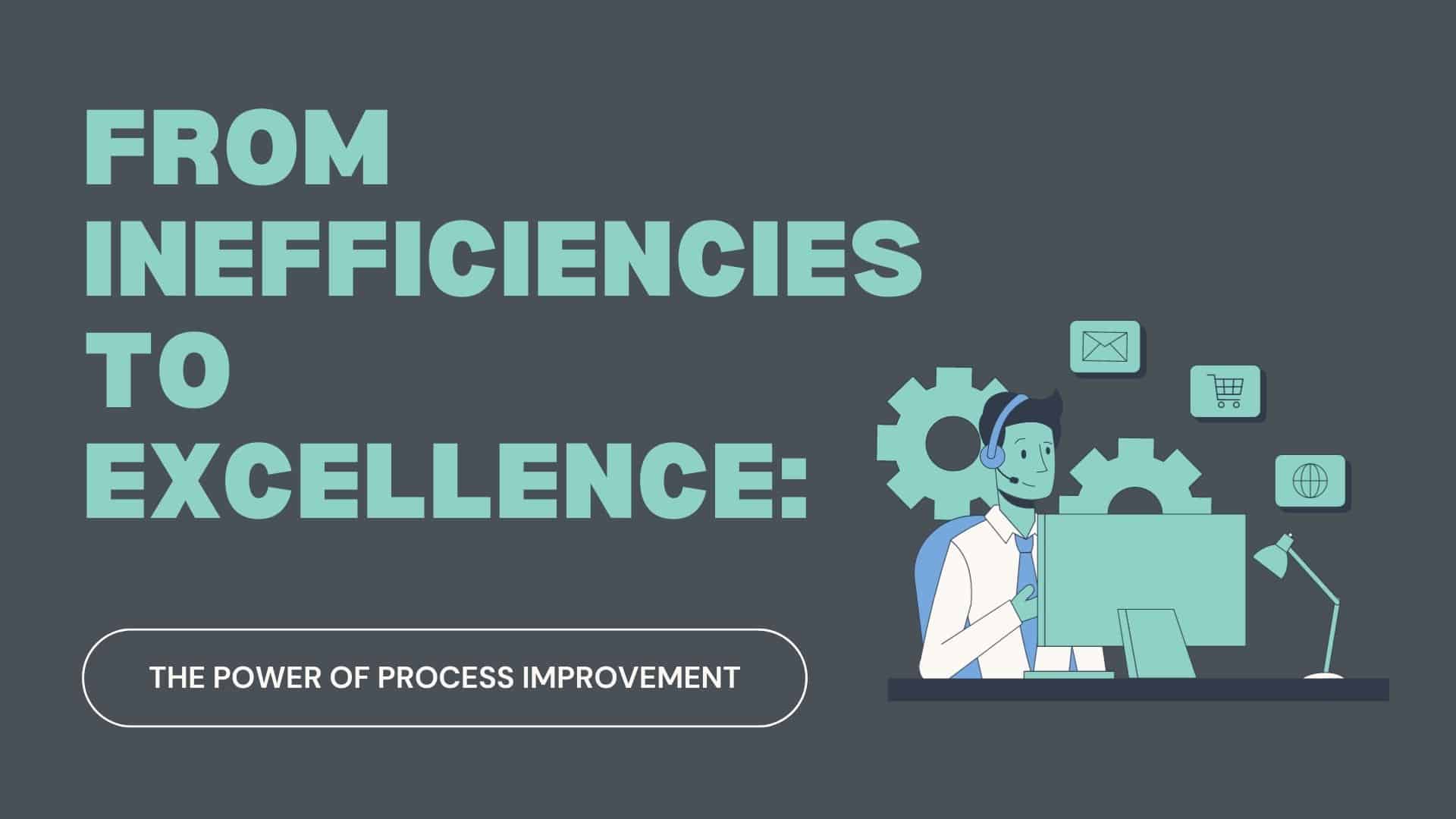In a world where change is the only constant, businesses must adapt or die. And that’s where process improvement comes in. It’s the secret weapon savvy companies use to stay ahead of the curve and boost operational efficiency. Whether you want to optimize your production processes, reduce costs, or enhance customer satisfaction, the secret lies in your processes.
In this article, I’ll give you the lowdown on process improvement, why it’s so essential, and the various approaches you can use to implement it. Plus, I’ll share some nifty tips to help you make process improvement work for your organization like a charm.
What is process improvement?
Inefficient business processes draining your resources and reducing productivity are just not the vibe we’re going for in 2023.
The game changer involves identifying and analyzing inefficiencies, developing targeted solutions, and implementing changes to optimize your processes. The ultimate goal? Increased efficiency, better quality, and reduced costs!
I understood the assignment, and let me tell you how you can too. Revamp your processes using these 5 easy steps:
Step 1: Identify inefficiencies
Whether it’s through data analysis, observation, or stakeholder feedback, the first step is to pinpoint the areas where your processes are falling short. Try to get as granular here as possible. Is it a documentation issue, communication issue, right person, wrong seat or something else?
If you don’t know where to start with identifying inefficiencies OR which ones to prioritize, we’ve got you covered.
Let’s be honest, every business process can be improved, but not every process improvement will have the same impact on your revenue. Your best bet is to start with data-backed conversations and figure out which areas of your business to prioritize.
The Agency Profitability Flywheel from our Agency Profitability Toolkit will help solve this problem. We use it, all our clients use it and trust me, it has changed the way I work tremendously. The core principle is about using regular reporting to identify where opportunities are and engage your team in coming together to identify opportunities to improve the process in order to fix what’s not working and replicate what is.
Side note: our Agency Profit Toolkit is a one stop shop for you to be able to outline some of these crucial profitability numbers to a potential buyer. Spreadsheets, templates and training videos, you name it, it’s all in the toolkit. Grab yours free at the link below:
Step 2: Analyze root causes
Once you’ve identified the problem areas, it’s time to dig deep and figure out what’s causing those inefficiencies. This can involve using various tools and techniques to get to the heart of the matter. The key here is facilitating a conversation with your team and getting them to identify where the issues lie with the current process.
Step 3: Develop solutions
Armed with a deep understanding of the root causes, it’s time to put your thinking cap on and develop targeted solutions to address the problem. This could involve brainstorming, researching best practices, or consulting with experts. Again, the most important thing to remember here is that your team is much more likely to implement and follow a process they came up with. Try to focus on creating the space for them to come forward with process improvement ideas instead of imposing ideas on them.
Step 4: Implement changes
With your solutions in hand, it’s time to put them into action! This could involve everything from training employees to upgrading equipment, depending on the nature of the problem. The key here is protecting the necessary time for these things to get implemented. Schedule it like a project instead of having your team try to make these changes off the side of their desks.
Step 5: Monitor and adjust
Finally, it’s time to monitor your newly optimized process to ensure that your changes are delivering the desired results. If they’re not, don’t worry – you can always go back and adjust your approach until you get the outcomes you’re looking for. You can start measuring the impact of a process improvement pretty quickly by paying attention to how it improves your Average Cost-Per-Hour, ABR, or Utilization rate.
Benefits of process improvements
Implementing process improvements can provide numerous benefits to your organization. Essentially, these should impact your Average Billable hours (how much you’re earning on an hourly basis) and your Average Cost Per Hour (how much you’re spending to get the work done on an hourly basis)
Here are some areas where you can expect the most significant improvements:
- Increased efficiency:
Streamline those operations and watch productivity soar. You’ll see this reflected in higher Average Billable Rates and lower Average Cost-Per hour. - Improved quality of outcome:
By identifying and addressing inefficiencies, you can up your game and provide top-notch products or services that your customers will rave about. That’s how you earn their loyalty and increase your Average Billable Rate. - Reduced costs:
By taking a hard look at your processes, you’ll be able to identify areas where you can cut unnecessary expenses and increase your profitability. By decreasing the time spent on getting something done and lowering the effort and judgement required at each step, you’re taking another step towards increased Average Billable Rates and decreased Average Costs-Per-Hour. - Employee morale:
When your team is working in a smooth, optimized process, they’ll feel more satisfied with their work and more productive. Not only will your team be showing up to work in their zone of genius, but your utilization rates will be incredible too! - Agility:
The market constantly changes, and your customers’ needs are always evolving. By continuously improving your processes, you can stay nimble and responsive to those changes, ensuring your organization stays ahead of the game. This leads to better Utilization rates as well.
Approaches to Process Improvements
Process improvement is like giving your business a much-needed tune-up. Just like how you take your car in for a regular service to keep it running smoothly, businesses need to identify inefficiencies, analyze root causes, develop solutions, implement changes, and monitor and adjust their processes. Here are some popular process improvement approaches that can help take your business to the next level:
- Lean Manufacturing
This systematic approach focuses on minimizing waste while maximizing value for the customer. Developed by Toyota in the 1940s, the lean methodology has become a popular way to eliminate waste in all forms, including overproduction, excess inventory, waiting time, defects, overprocessing, unnecessary motion, and unused talent. It’s like Marie Kondo’s KonMari method for business processes – if it doesn’t bring value, it’s out!
- Kaizen
A Japanese term that means “continuous improvement,” Kaizen is a slow and steady approach to process improvement, where small, incremental changes are made over time. This bottom-up approach empowers employees to identify and solve problems themselves rather than waiting for management to devise a solution. “Many hands make light work.”
- Six Sigma
Six Sigma is a data-driven approach that uses statistical analysis to reduce defects and variation in a process. It’s like having a personal trainer for your business – you set goals, measure progress, and work toward continuous improvement. Six Sigma has become popular in industries where quality control is essential, like manufacturing and healthcare.
- Plan Do Check Act
PDCA is a cyclical approach to process improvement that involves four stages: planning, doing, checking, and acting. This approach is like a never-ending process improvement cycle – you plan the changes, do them, check the results, and then act on what you’ve learned. It’s a flexible approach that can be used for any process, and it emphasizes the importance of continuous improvement.
- 5S
5S is a process improvement methodology that focuses on workplace organization and cleanliness. The five S’s stand for Sort, Set in order, Shine, Standardize, and Sustain. It’s like the Marie Kondo method but for your workplace. By organizing and cleaning up your workspace, you can optimize productivity and reduce waste.
- Total Quality Management
TQM is a holistic approach to process improvement that emphasizes quality in all aspects of the business. It’s like the saying goes, “quality over quantity.” TQM involves a customer-focused approach to quality that involves all employees in the organization. Continuous improvement and the use of data to inform decision-making are key aspects of TQM.
- Kanban
Kanban is a visual system for managing workflow and inventory. It’s like having a whiteboard with all your tasks laid out in front of you, with sticky notes representing each task. Kanban uses visual cues to signal when work needs to be done and helps optimize flow and reduce waste.
Implementing process improvements can seem daunting, but with the right team and approach, it can be a breeze. Assemble the right team, establish clear goals and objectives, identify inefficiencies through data collection and process mapping, analyze root causes using techniques like the Five Whys and Fishbone diagram, develop solutions through brainstorming and prioritization, create a change management plan for implementing changes, and monitor progress using key performance indicators (KPIs) and continuous improvement.
By using the right process improvement approach and implementing these tips, you can transform your business and take it to the next level.
Tips for Implementing Process Improvements
Improving your business processes can be like solving a Rubik’s Cube – complex and sometimes frustrating. But with the right tips, you can tackle process improvement like a pro and get those colours lined up perfectly. Here are some tips to help you implement process improvements effectively:
Assemble the right team.
You know what they say – teamwork makes the dream work! Success in your process improvement efforts hinges on having the right team. So, choose team members with the right skills and expertise to address the problem. Involving the team members who came up with the process improvement idea in the first place is generally a good practice, as they’ll be bought in to seeing it through.
Establish clear goals and objectives
Like a GPS system, having clear goals and objectives will help ensure everyone is working towards the same destination. This means setting specific, measurable, achievable, relevant, and time-bound (SMART) goals.
Identifying inefficiencies
To identify inefficiencies, you’ll need to put on your Sherlock Holmes hat and do some detective work. This can involve observing the process in action, talking to stakeholders, or analyzing data. Whatever method you choose, the key is to get a clear picture of what’s not working.
Data collection:
Like a bee collecting nectar, collecting data is essential for identifying inefficiencies and tracking progress. Make sure you have a system in place for collecting and analyzing data.
Process mapping:
To see the big picture, you’ll need a map. Process mapping is a valuable tool for visualizing the process and identifying inefficiencies. It involves creating a visual representation of the process and can help to identify areas where improvements can be made.
Analyzing root causes
Like a doctor diagnosing an illness, you need to identify the root causes of inefficiencies to prescribe the right treatment. This can involve using tools and techniques such as the Five Whys technique or fishbone diagram.
The Five Whys technique:
The Five Whys technique is a problem-solving tool that involves asking “why” five times to get to the root cause of a problem. It is based on the idea that by asking “why” repeatedly, you can peel back the layers of a problem to uncover the underlying cause.
The fishbone diagram:
The fishbone diagram, also known as the Ishikawa diagram or cause-and-effect diagram, is another tool for identifying the root causes of a problem. It involves creating a diagram that shows the different factors contributing to the problem and can help to identify which factors are most significant.

Developing solutions
With the root causes identified, it’s time to put on your thinking cap and develop solutions. This may involve brainstorming, researching best practices, or consulting with experts.
Brainstorming
Brainstorming is a creative technique that involves generating a large number of ideas in a short period of time. It allows team members to think outside of the box and come up with innovative solutions to problems. During the brainstorming process, all ideas are accepted without criticism, and the team can later prioritize and evaluate them using a prioritization matrix.
Our toolkit has everything you need to run a successful brainstorming session that does not stray from the agenda but leaves ample room for creativity and collaboration.
Prioritization Matrix
A prioritization matrix is a decision-making tool that helps teams evaluate and prioritize ideas based on their importance and feasibility. It typically involves creating a matrix with two or more criteria for evaluating ideas, such as impact and ease of implementation. The team can then assign a score to each idea for each criterion, and the scores can be used to determine which ideas are the most promising and should be implemented first. The prioritization matrix can help the team focus on the most important and feasible ideas, saving time and resources in the process.
Learn Parakeeto’s prioritization matrix for free here.
Implementing changes
Implementing changes can be like navigating a minefield – tricky but essential for improving the process. Make sure you have a change management plan in place and communicate the changes to stakeholders.
A change management plan not only ensures that everything planned out on paper actually gets executed but also helps you and your team stay agile in the face of unexpected changes and obstacles.
Monitoring and adjusting
Once the changes are in place, you need to keep a watchful eye on the process to ensure that they are effective. This can involve tracking key performance indicators (KPIs) and adjusting as needed.
Process improvement is like a marathon, not a sprint. Ensure you have a culture of continuous improvement in place and are always looking for ways to optimize your processes.
Conclusion
Process improvement is an essential tool for businesses that want to stay competitive and maximize their operational efficiency. By identifying inefficiencies, analyzing root causes, developing solutions, implementing changes, and monitoring and adjusting, you can optimize your processes, leading to increased efficiency, improved quality, and reduced costs. There are various approaches to process improvement, such as Lean Manufacturing, Kaizen, Six Sigma, PDCA, 5S, Total Quality Management (TQM), and Kanban. Each approach has its strengths and weaknesses, and the choice of approach will depend on the nature of the problem and the organization’s goals.
To implement process improvements effectively, it’s essential to have the right team in place, establish clear goals and objectives, collect data, analyze root causes, develop solutions, implement changes, monitor and adjust, and maintain a culture of continuous improvement. By following these tips, organizations can significantly improve their processes and gain a competitive advantage.
It’s also important to note that process improvement is not a one-time event. It’s an ongoing process that requires continuous monitoring and adjustment. Organizations should continually look for ways to improve their processes and make them more efficient and effective.
In conclusion, process improvement is an essential tool for businesses that want to stay competitive and maximize their operational efficiency. By identifying inefficiencies, analyzing root causes, developing solutions, implementing changes, and monitoring and adjusting, organizations can optimize their processes, leading to increased efficiency, improved quality, and reduced costs. There are various approaches to process improvement, and the choice of approach will depend on the nature of the problem and the organization’s goals. To implement process improvements effectively, organizations should follow the tips mentioned above and maintain a culture of continuous improvement.





0 Comments